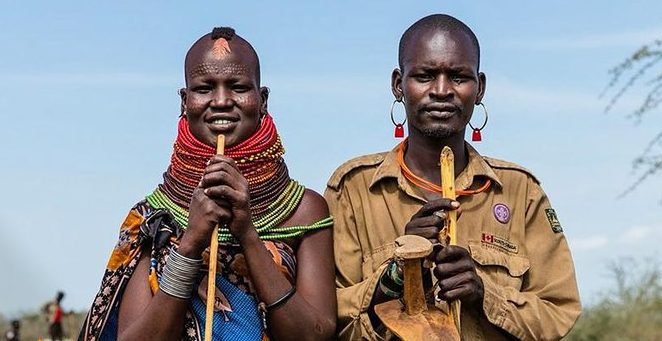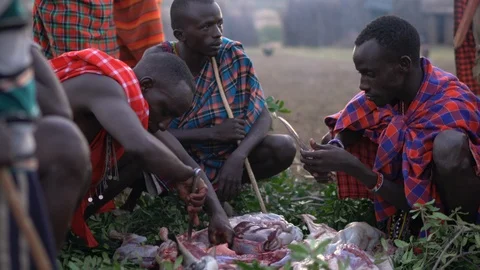
INTERNATIONAL
info@allinafricasafaris.com
INTERNATIONAL, 24/7 Help Support
USA/CANADA | M-F 9:00 am - 5:00 pm

The “Ik” people are a small indigenous group of people that live in Kaabong district around the majestic mountain Morungole. They live near Kidepo valley National Park. Their population stands at an estimate of over 15,000 people. They highly depend on subsistence farming growing crops like millet, sorghum, corn and herbs. They are also known for their keen interest in apiary farming and rearing chickens.
The word “Ik” means ” head of migration”. They are believed to have taken on this name due to their habit of migrating often. These people are believed to have moved to Uganda after they were displaced from their land by the “Pokot” of Kenya.

Farming forms an integral part in the lives of the “Ik” . They grow sorghum, millet, corn and herbs for their home consumption. They also rear chickens and livestock. The people in the community actively participate in farming. However, apiculture is carried out by the men as it is considered a masculine task.
Marriage
Marriage and child bearing are very important aspects among this community. Marriages are arranged which means that couples are betrothed to each other till they come of age. Bride price is paid in form of bee hives, chicken, goats and monetary cash. Marriage is observed on the inter-clan basis as incest is not acceptable.
Before a marriage ceremony, two rituals are performed. At the beginning, the betrothed are rubbed with oil; a ritual known as ” Tsan-es.” This ritual is followed by the groom spearing a tree in order to test his accuracy when it comes to hunting. The spearing also symbolizes masculinity and the ability to provide for the bride to be. The bride then undergoes a vetting process. During the vetting period, the bride show cases the female qualities of home making like looking after the home, nurturing and comforting.
In the second phase, the groom’s family brings in the dowry and agreements for marriage are made over a special brew or beer. Celebrations are made and then the betrothed are considered as fully wedded.
 The youth are initiated into manhood through a rite of passage called “Ipeye-es.” The young boys slaughter and skin a goat using a spear. The skinning is neat and clean without the internal organs of the goat being damaged. The old men also undergo an initiation ritual called “Tasapet.” The old men are shaved clean of their hair and they then live in the bush for over a month of isolation. A bull is also slaughtered in this rite. Men that accomplish this rite are considered elders and their advice is always sought.
The youth are initiated into manhood through a rite of passage called “Ipeye-es.” The young boys slaughter and skin a goat using a spear. The skinning is neat and clean without the internal organs of the goat being damaged. The old men also undergo an initiation ritual called “Tasapet.” The old men are shaved clean of their hair and they then live in the bush for over a month of isolation. A bull is also slaughtered in this rite. Men that accomplish this rite are considered elders and their advice is always sought.
In between late December and early January, the “Ik” gather together to bless the seeds for the planting season. This ceremony is known as “itowe-es.” The seeds to be planted are placed under a sacred tree. The farmers dance around this tree so as to get blessings of a bountiful harvest.
Beer is made in large amounts using millet and sorghum. This beer is for both leisure drinking and for ceremonial purposes.
Hunting
Hunting for meat is carried out by the Ik. Meat is preserved traditionally and eaten on various occasions that require it like parties and home made meals.
Polygamy
The Ik people are free to have more than one wife if they can afford dowry. Since dowry is paid using beehives most of the time, a man with many beehives can marry even five wives.
What are you surely waiting for? Come on, let us explore the beautiful community of the Ik people together !






